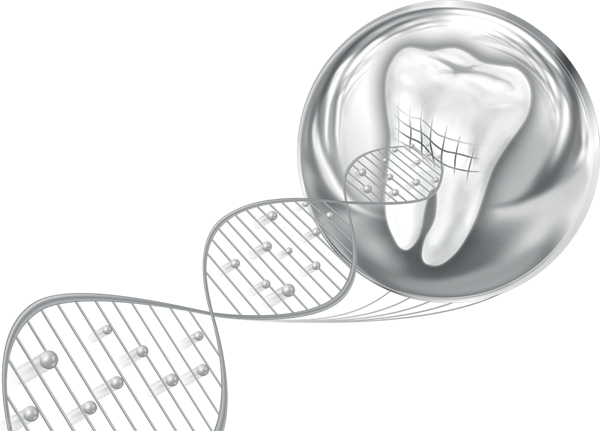GUM DISEASE TREATMENT IN Lancashire
GUM DISEASE PERIODONTICS
407 Blackpool Road , Preston , Lancashire
Call: 01772 – 726932
Gum Disease
Periodontal disease or gum disease is a chronic bacterial infection of the gums and the supporting bone around the teeth. It is a major cause of tooth loss in adults, however; as periodontal disease is often painless, you may not even know you have it.
Although most individuals suffer from gum inflammation from time to time, approximately 13 to 17% of the population appear to suffer from the more severe forms of the gum disease, which causes loss of supporting bone.
Gum disease has three stages of progression: gingivitis, periodontitis, and advanced periodontitis; the longer the disease has to advance, the more damage it causes. With advancements in detection and treatment, we can discover periodontal disease early and begin treatment before complicated issues arise.

Gum Disease Warning Signs
Changes to your Teeth, Bite or Dental Work
Changes to Your Gums
Bad Breath or Odd Taste in Your Mouth
Sores in Your Mouth
Loose Teeth & Receded Gums
Protecting Your Gums and Surrounding Tooth Structure
Periodontal Cleaning
Periodontal cleaning, also known as deep teeth cleaning or periodontal maintenance therapy, is an ongoing treatment for patients diagnosed with periodontal disease. A non-surgical, minimally invasive treatment carefully cleaned by an experienced hygienist. Periodontal maintenance is required to remove plaque and calculus above and below your gum line. Additionally, clean deep periodontal pockets and smooth the tooth to remove harmful toxins.
Gum Disease Causes Tooth Loss
What Causes Periodontal Disease?
The main cause of Gum disease is the formation of dental plaque, which forms a sticky film on the tooth surface. Plaque contains bacteria, which release toxins that can damage the gums. If allowed to accumulate, plaque causes inflammation of the surface of the gums known as ‘gingivitis’. This type of inflammation will resolve if the plaque is removed through the cleaning of the teeth.
As the amount of plaque increases, it can begin to mineralize and form tartar (calculus). Such hard deposits have a rough surface and allow more plaque formation and further damage to the gums. If plaque accumulates for a long time the changes it causes in the gums can lead to loss of bone support, a condition known as ‘Periodontitis’.
Not everyone is susceptible to periodontal disease. Individuals with gum disease have a low resistance to periodontal bacteria. This lower resistance can be attributed to one or more different risk factors, such as Age – Poor Oral Hygiene – Smoking – Stress – Pregnancy – Diabetes …
Gingivitis or Periodontitis?
Gingivitis (gum inflammation) usually precedes periodontitis. However, it is important to know that not all gingivitis progresses to periodontitis. In the early stage of gingivitis, bacteria in plaque build up, causing the gums to become inflamed and to easily bleed during tooth brushing. Although the gums may be irritated, the teeth are still firmly planted in their sockets. No irreversible bone or other tissue damage has occurred at this stage.
When gingivitis is left untreated, it can advance to periodontitis. In a person with periodontitis, the inner layer of the gum and bone pull away from the teeth and form pockets. These small spaces between teeth and gums collect debris and can become infected. The body’s immune system fights the bacteria as the plaque spreads and grows below the gum line.
Toxins or poisons produced by the bacteria in plaque start to break down the bone that holds teeth in place. As the disease progresses, the pockets deepen and more gum tissue and bone are destroyed leading to tooth loss
Gingivitis
Gingivitis is the mildest form of periodontal disease. Often, gingivitis is the result of inadequate oral hygiene. When plaque is allowed to remain on teeth, bacteria within it begins to irritate your gums. As a result, your gums will become red, swollen, and puffy bleeding easily. Additionally, sensitivity and tenderness of the gum tissue, and slight bleeding can occur. You may notice your toothbrush or floss having a slight pinkish tone to them after use.
Since gingivitis rarely causes pain, most patients do not even know when they have it. Eventually, the bacteria will work its way above your gum line.
Untreated Gum Disease
If left untreated for long enough, gum disease can lead to tooth loss. In fact, gum disease is the leading cause of tooth loss in adults. A growing body of research is starting to show that untreated gum disease can contribute to or worsen other medical conditions, such as heart disease, stroke, diabetes, and respiratory ailments. Since gum disease sometimes does not present symptoms, it is important to see your dentist every six months for cleanings, especially if you have a history or family history of gum disease.
Gum Disease Causes Tooth Loss
Gum disease, also known as periodontal disease, is an infection of the tissue and gum structure that hold your teeth in place. The gum tissue and bone structure are attacked by the bacteria, which weakens your tooth structure. Consequently, you are at risk for tooth loss. Before replacing a tooth that is lost, gum disease must be treated.
Without regular dental cleanings, harmful bacteria and hard deposits called calculus build up on your teeth above and below your gums. Additionally, the bacteria releases harmful toxins that can lead to gingivitis, causing inflamed and bleeding gums.
Gum Disease
FAQ,s
How is gum disease diagnosed?
To find out if you have gum disease, your dentist or dental hygienist will do an examination to look for:
- Bleeding gums.
- Hard buildups of plaque and tartar above and below the gums.
- Areas where your gums are pulling away or shrinking from your teeth.
- Pockets that have grown between your teeth and gums.
Your dentist or dental hygienist may take X-rays of your teeth to look for bone damage and other problems.
What causes gum disease?
Gum disease is caused by the growth of germs called bacteria on the teeth and gums. Bacteria are present in plaque, a clear, sticky substance that your mouth produces.
- The bacteria in plaque feed on sugars in the foods you eat and drink and make poisons (toxins) and other chemicals. The toxins irritate your gums, causing them to swell and bleed easily when brushed.
- In time, plaque can harden into a buildup called calculus or tartar. This irritates the gums even more and causes them to pull away from your teeth.
Things that make you more likely to get gum disease include:
- Not cleaning your teeth well at home and not getting regular dental cleanings.
- Smoking or chewing tobacco. People who use tobacco are much more likely to get gum disease than those who don’t. They also have more serious gum disease that leads to tooth loss and is hard to treat.
- Having gum disease in your family.
- Having a problem that weakens your immune system, such as a high stress level or a disease like diabetes, AIDS, or leukemia.
- Eating a diet that is low in vitamins and minerals, which can weaken your immune system, or high in sugary foods and carbohydrates, which help plaque grow.
How can you prevent gum disease?
Gum disease is most common in adults, but it can affect anyone, even children. So good dental habits are important throughout your life.
- Brush your teeth 2 times a day, in the morning and before bedtime, with a fluoride toothpaste.
- Floss once each day.
- Visit your dentist for regular checkups and teeth cleaning.
- Don’t use tobacco products.
What are the symptoms?
Healthy gums are pink and firm, fit snugly around the teeth, and do not bleed easily. Gingivitis causes:
- Gums that are red, swollen, and tender.
- Gums that bleed easily during brushing or flossing.
Gingivitis usually isn’t painful, so you may not notice the symptoms and may not get the treatment you need.
In periodontitis, the symptoms are easier to see, such as:
- Gums that pull away from the teeth.
- Bad breath that won’t go away.
- Pus coming from the gums.
- A change in how your teeth fit together when you bite.
- Loose teeth.
If you think you have gum disease, see your dentist right away. Early treatment can keep it from getting worse.
What are some risk factors?
You may be at risk for gum disease if any of the following apply to you:
- Tobacco and alcohol use
- Systematic diseases
- Genetics
- Pregnancy
- In addition, the following types of prescription drugs may also increase the risk of gum disease. Talk with your dentist if you are taking:
- Steroids
- Cancer therapy drugs
- Oral contraceptives
- An anti-epilepsy drug
- A calcium channel blocker
How can I tell if I have gingivitis or periodontitis ?
4 out of 5 people have periodontal disease and don’t know it. In the early stages, there is often no pain and the disease will go unnoticed. Having no signs and symptoms is common and makes regular dental visits and daily brushing/flossing vital. Periodontal disease often begins with gingivitis, a film of bacteria left on the teeth. Symptoms can include red and puffy gums, bleeding gums, bad breath, loose teeth, receding gums, pus, teeth spacing, and discomfort.
Can my gums become strong and healthy again?
Yes, the combination therapy between hygiene visits and deep scaling, will allow your gum tissues to try and reattach and become healthy and strong, while tightening the pockets and improving inflammation. The goal with periodontal therapy is to stabilize your tissue and prevent any further bone loss, helping you retain your healthy teeth and prevent tooth loss.



